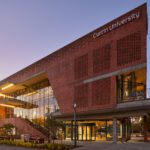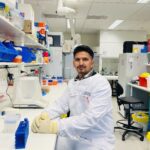Curtin University Physics Honours student, Mark Zammit, has completed a unique study into Debye plasmas which could maximise fusion energy production.
His theory can assist in accurately predicting the occurrence of fusion reaction activity within stars, which could then be modeled and used by scientists to efficiently harness fusion energy, a potentially carbon-free source of energy.
“Debye plasmas are the states of matter found in the core of stars, which can be modeled to increase the efficiency of fusion energy production,” Mr Zammit said.
“My theory is now being put to use by physicists in Germany, as well as attracting interest from Macedonia, to assist their understanding of fusion reactions.”
Under the supervision of Professor Igor Bray and Associate Professor Dmitry Fursa, at Curtin’s Institute of Theoretical Physics (ITP), Mr Zammit said the ultimate goal of fusion was to generate cost-effective, efficient, renewable and clean electricity.
“With rising awareness of global warming, population increase and pollutants, countries around the world are putting more emphasis on research into alternative energy sources,” he said.
Mr Zammit said his theory would be tested by controlled experiments which replicated conditions within the core of stars to initiate a fusion reaction. These experiments are currently taking place across Europe, Japan and the USA.
“In these experiments, high-energy laser beams are used to symmetrically hit the target to initiate the fusion reaction, which is then heated to temperatures as high as 100 million Kelvin and pressures as high as 100 billion atmospheres,” he said.
To illustrate just how hot that would be, Mr Zammit said the approximate optical surface (photosphere) temperature of the sun was a ‘cool’ 6000 Kelvin, compared to the 100 million recreated in the experiments.
“The idea is to produce more power than the laser energy required to spark the same reaction. This reaction is called inertial confinement fusion (ICF) which is also the process which powers the sun,” he said.
“My results, produced at ITP, are essential for accurately modeling these plasmas and hence these ICF reactions.”
Recently published in the American scientific journal, Physical Review, for his paper, Mr Zammit said he hoped his work would inspire future students to enter the field.
“We are doing some very exciting work at ITP and I hope my story will help young aspiring students to realise they can make a significant contribution to their chosen field,” he said.
Contacts:
Professor Igor Bray
Head of Department of Imaging & Applied Physics, School of Science, Curtin University
Tel: 08 9266 4416; Email: i.bray@curtin.edu.au
Andrea Barnard, Public Relations, Curtin
Tel: 08 9266 4241, Mobile: 0401 103 532, Email: andrea.barnard@curtin.edu.au
Web: http://curtin.edu.au


